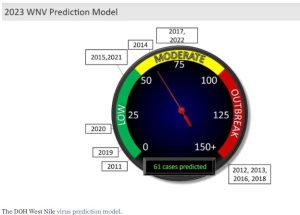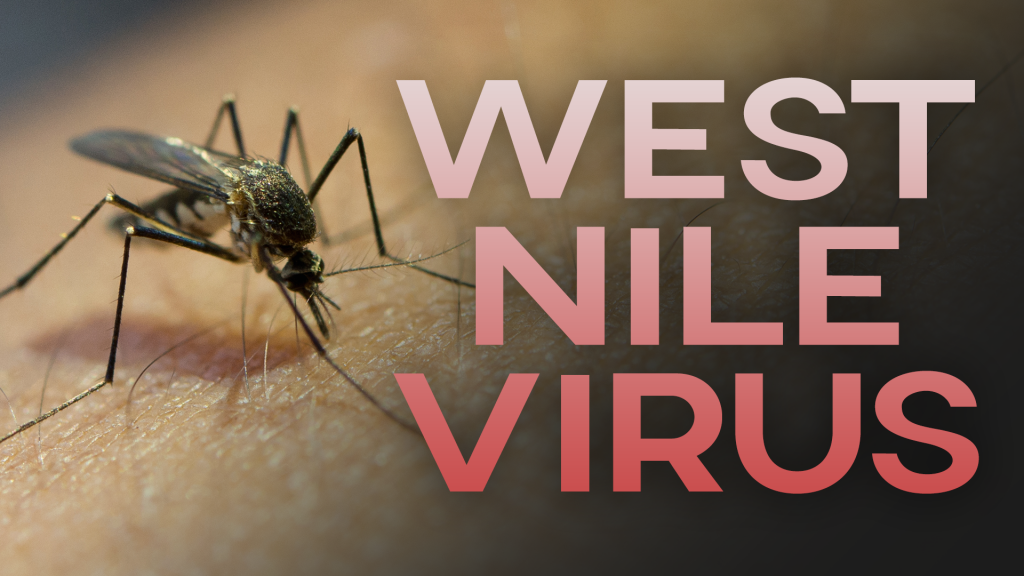SIOUX FALLS, S.D. – July, August and September are considered the worst three months when it comes to the West Nile virus in South Dakota.
The most recent data from the South Dakota Department of Health is proving that to be true. Since the end of July, West Nile cases have grown from six to 22 as of Aug. 25.
“We’re right in the middle of when most of our cases are occurring as well as when many of the exposures are occurring,” State epidemiologist Dr. Joshua Clayton told KELOLAND News. “August and into mid-September tend to be high times for both mosquitoes biting individuals as well as for folks to then be infected by West Nile virus.”
The 22 human cases have come in 16 different counties (Beadle, Brown, Campbell, Davison, Faulk, Hughes, Jerauld, Kingsbury, Lincoln, Mead, Minnehaha, Oglala Lakota, Pennington, Sanborn, Walworth and Yankton). Brown and Hughes counties have each reported three cases. Health officials are predicting a total of 61 West Nile cases will be reported in South Dakota for the 2023 season.
 The West Nile prediction model was developed in a partnership with the DOH and South Dakota State University.
The West Nile prediction model was developed in a partnership with the DOH and South Dakota State University.
Along the West Nile prediction model, trapping and testing mosquitoes has improved across the state to monitor West Nile.
“The testing and focus on surveillance for mosquitoes has really progressed,” Clayton said. “There has been training that’s been done both by SDSU as well as by our own staff to make sure that individuals are able to have traps and make local decisions on when they should be spraying.”
The highest number of West Nile cases reported in a single year in South Dakota was 2012 when 203 human cases were reported along with three deaths.
Clayton said conditions in 2023 have been similar to 2021 and 2022. That means there hasn’t been an abundance of mosquitos or temperature that lead to a severe West Nile virus season. He said there’s two major species of mosquitoes – Culex tarsalis and Aedes vexans – in South Dakota
“It’s been a great tool for us,” Clayton said. “It does help predict the number of cases based on historical human West Nile virus cases that have occurred by the individual week and within individual counties.”
“Aedes vexans we consider the floodwater mosquito so they’ll typically arrive earlier and with the Culex tarsalis mosquito, they actually transmit West Nile virus and they actually like stagnant water.”
Clayton said hot and dry conditions dry up many water pools that Culex tarsalis mosquitoes thrive in. He said constant rain to maintain stagnant water pools leads to perfect breeding grounds for mosquitoes to transmit West Nile.
What are the symptoms of West Nile?
West Nile symptoms include fever, headache, body aches and a rash. Clayton said severe signs of West Nile include stiff neck, confusion or paralysis of a limb. He said if people receive a lot of mosquito bites, they should monitor for those symptoms for the first two to six days after the bites.
“Most of the time you really do feel wiped out with the West Nile virus,” Clayton said. “It does sap your strength, you can have weakness of one or more limbs. It can land you in the hospital and require some additional support. All of that because there’s no specific treatment for West Nile virus.”
West Nile virus has been in the United States and South Dakota for more than 20 years. Data shows 1 out of every 150 West Nile cases can become serious and potentially fatal.
Support and education against West Nile
The DOH provides $500,000 each year to help cities, counties and tribal communities spray for mosquitoes. In addition, education campaigns have led to more awareness of the best precautions to take against mosquitoes and the West Nile virus.
Health officials say people should wear bug spray, remove standing water, cover exposed skin and take caution at dusk and dawn. “Individuals can take action,” Clayton said. “Really taking precautions during the time between dusk and dawn so that those mosquitoes, when they’re most active, are not going to bite you.”












